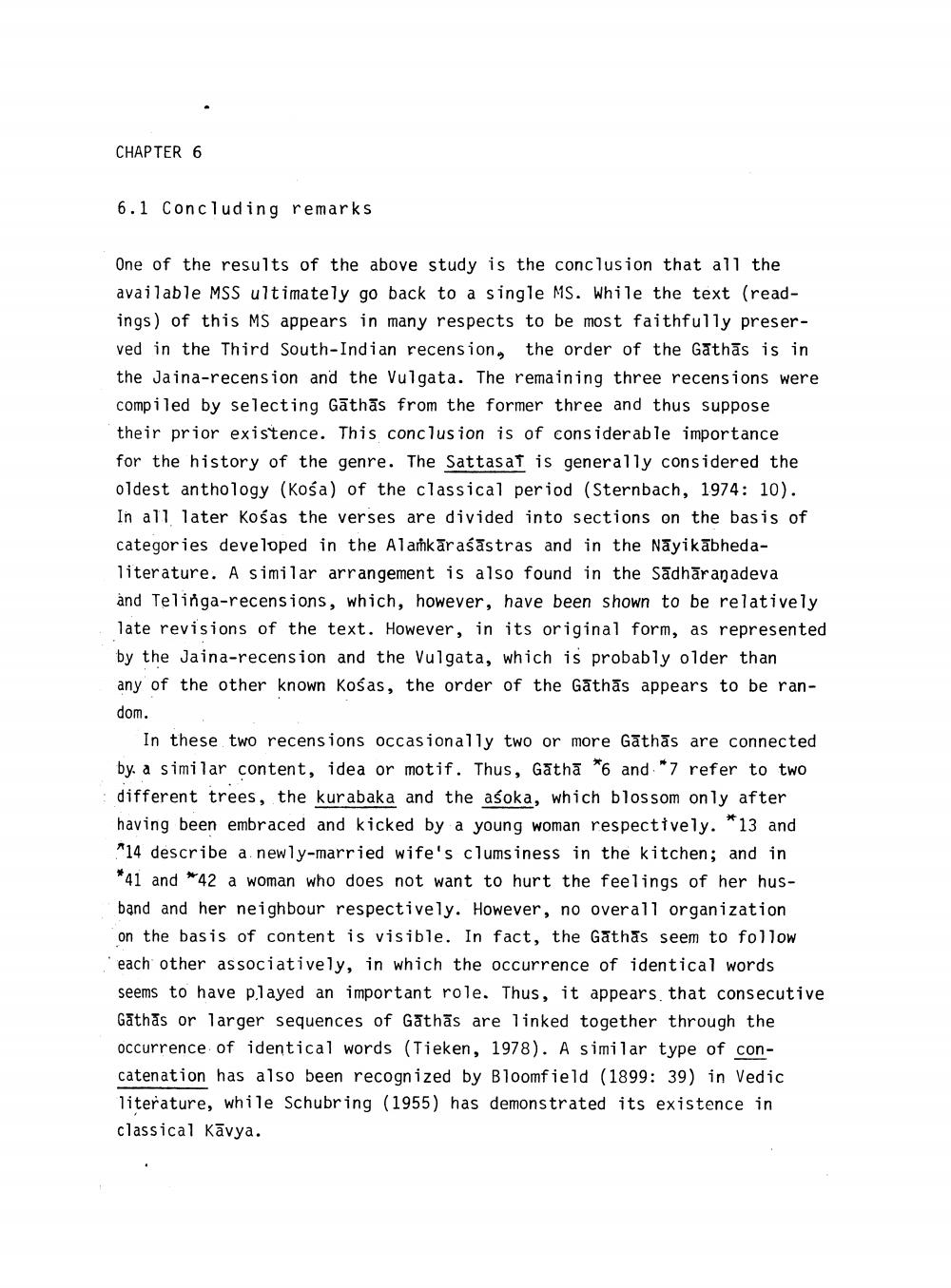________________
CHAPTER 6
6.1 Concluding remarks
One of the results of the above study is the conclusion that all the available MSS ultimately go back to a single MS. While the text (readings) of this MS appears in many respects to be most faithfully preserved in the Third South-Indian recension, the order of the Gathās is in the Jaina-recension and the Vulgata. The remaining three recensions were compiled by selecting Gāthas from the former three and thus suppose their prior existence. This conclusion is of considerable importance for the history of the genre. The Sattasaf is generally considered the oldest anthology (Kośa) of the classical period (Sternbach, 1974: 10). In all later kośas the verses are divided into sections on the basis of categories developed in the Alamkāraśāstras and in the Nāyikābhedaliterature. A similar arrangement is also found in the Sādhāraṇadeva and Telinga-recensions, which, however, have been shown to be relatively late revisions of the text. However, in its original form, as represented by the Jaina-recension and the Vulgata, which is probably older than any of the other known Kośas, the order of the Gathās appears to be random.
In these two recensions occasionally two or more Gathās are connected by a similar content, idea or motif. Thus, Gatha *6 and *7 refer to two different trees, the Kurabaka and the aśoka, which blossom only after having been embraced and kicked by a young woman respectively. *13 and *14 describe a newly-married wife's clumsiness in the kitchen; and in *41 and 42 a woman who does not want to hurt the feelings of her husband and her neighbour respectively. However, no overall organization on the basis of content is visible. In fact, the Gathas seem to follow each other associatively, in which the occurrence of identical words seems to have played an important role. Thus, it appears that consecutive Gathas or larger sequences of Gathās are linked together through the occurrence of identical words (Tieken, 1978). A similar type of concatenation has also been recognized by Bloomfield (1899: 39) in Vedic literature, while Schubring (1955) has demonstrated its existence in classical Kavya.




